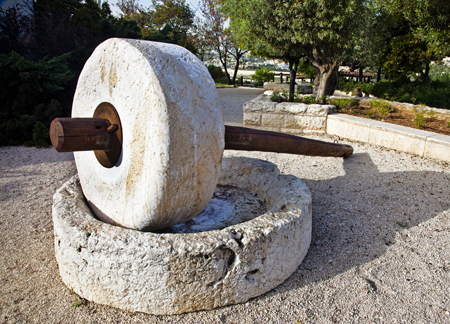Last week we began talking about Jesus, the Master Communicator. When we encounter Jesus in the New Testament we tend to view him through the lens of him as our Savior and Lord. But how often do we view him through the lens of Jesus the Master Communicator? In light of this, what are some ways we can adopt this communication style in our own communication of the gospel in formal and non-formal ways?
Over six weeks we will be highlighting some of the communication styles of Jesus. Last week we talked about the first one: Jesus used good stories. Today we will look at the second one.
2. Jesus used everyday objects and verbal imagery
If you give someone a mental picture, he will take it home and it will be in his heart for a long time. Jesus knew that and often used everyday images and objects or provided rich verbal imagery.
When Jesus talked about paying taxes to Caesar in Matthew 22, he used an actual coin. The Pharisees as usual were on a mission to “entangle” Jesus by using the current political situation. Being under Caesar’s rule, they were trying to get Jesus to say that the people should not pay taxes to Caesar. However, this would be action against Roman rule. But rather than get riled up about the question, as the Pharisees expected him to do, Jesus simply took an everyday object (a denarius coin) and asked simply, “Whose likeness and inscription is this?” To which the people said, “Caesar’s.” Then he said to them, “Therefore render to Caesar the things that are Caesar’s, and to God the things that are God’s.” Jesus knew what was in the hearts of the Pharisees, and he used their own example to turn it around on them.
Now, Jesus could have lectured. He could have filled his instructions with “oughts” and “musts” and “shoulds.” He could have delivered an hour-long sermon about the responsibility towards the state and responsibility towards God. But he didn’t. He used a simple object and asked a simple question. The best part, though? It says, “And when they heard it, they marveled!” (Matthew 22:22)

imgbuddy.com
In other situations Jesus used vivid verbal imagery to describe what he was talking about. For example, when talking about the greatest in the kingdom of heaven in Matthew 18, he said, “Whoever receives one such child in my name receives me, but whoever causes one of these little ones who believe in me to sin, it would be better for him to have a great millstone fastened around his neck and to be drowned in the depth of the sea.” (Mt. 18:5-6) I don’t know what your imagining as Jesus describes that picture, but the image of a millstone (an object of serious punishment, heavier than anything we can bear) tied around my neck and then being thrown into the sea is not exactly subtle. Granted, I don’t use a millstone every day in my life, but the people with Jesus did. Perhaps if Jesus was telling this today he’d talk about tying a Volkswagon around one’s neck and being thrown into the middle of Lake Michigan. That’s certainly not an image we are likely to forget.
Jesus spoke in images, not abstract concepts.
Whether it be peaceful images like flowers, birds of the air, mustard seeds, and rocks, or more vivid images like millstones and cutting-off-of-hands, Jesus was always painting a mental image or a picture.
What other verbal images or physical objects do we see Jesus using in his communication?

Leave a Reply